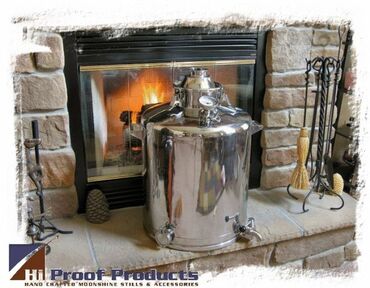Copper or Stainless and Why?
The vast majority of stills today are either stainless steel or copper in construction. It basically boils down to a matter of choice. Stainless steel and copper moonshine stills are both strong and easy to clean. Stainless steel will most likely need less attention than it's copper counterpart in the cleaning area
We hand-craft copper still columns and condensers from copper pipe because copper is far more efficient for conducting heat than it's stainless steel counterpart. This in itself allows for better control and stability and improves the outcome of the final distillation in terms of flavor. Stills without copper incorporated in their construction either in the in the column, plates, or condenser are thought to put out undesirable spirits.
Copper stills continually sacrifice themselves on a molecular level. The copper itself reacts with the foul tasting sulphides, present in the mash which is there as a natural part of the grains. Sulphides are released as the yeast goes to work. Copper in the still binds with hydrogen sulfide and other acids and oils to eliminate rotten-egg, skunky smells from the spirits.
Copper also reduces bacterial contamination which is the leading reason why it is also currently used for residential as well as commercial water piping. Copper has been used to make stills since ancient times and as successive generations have found it remains the best option thanks to its unique properties and natural advantages in the distilling process. For superior results, Hi Proof Products hand-crafts copper like the master distillers do.
We hand-craft copper still columns and condensers from copper pipe because copper is far more efficient for conducting heat than it's stainless steel counterpart. This in itself allows for better control and stability and improves the outcome of the final distillation in terms of flavor. Stills without copper incorporated in their construction either in the in the column, plates, or condenser are thought to put out undesirable spirits.
Copper stills continually sacrifice themselves on a molecular level. The copper itself reacts with the foul tasting sulphides, present in the mash which is there as a natural part of the grains. Sulphides are released as the yeast goes to work. Copper in the still binds with hydrogen sulfide and other acids and oils to eliminate rotten-egg, skunky smells from the spirits.
Copper also reduces bacterial contamination which is the leading reason why it is also currently used for residential as well as commercial water piping. Copper has been used to make stills since ancient times and as successive generations have found it remains the best option thanks to its unique properties and natural advantages in the distilling process. For superior results, Hi Proof Products hand-crafts copper like the master distillers do.



